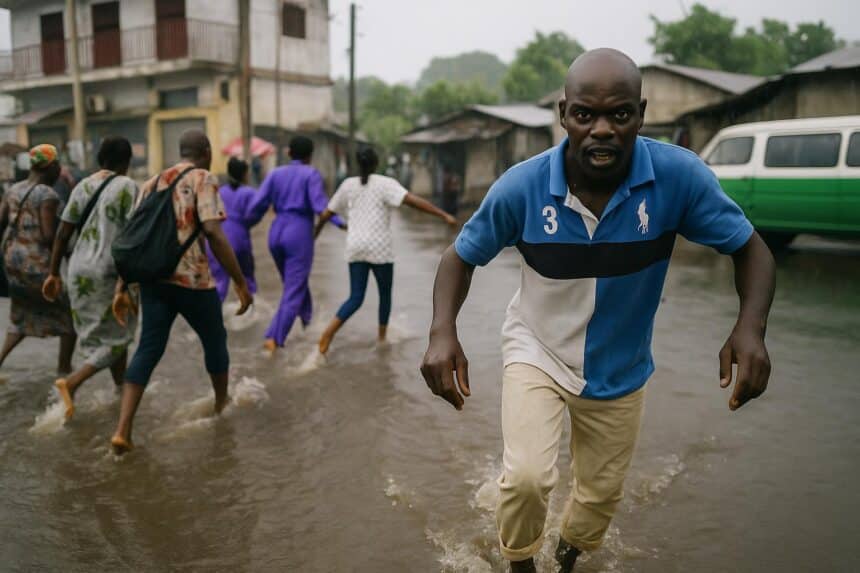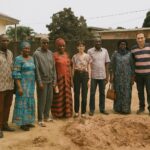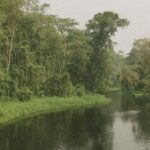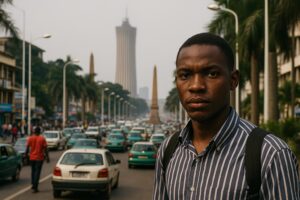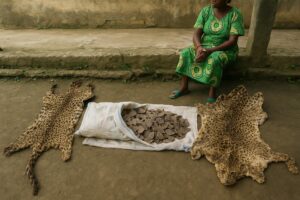Gloomy Skies Over Mfilou-Ngamaba
Along Avenue de l’Union africaine, residents like M. Nianga watch cloudy skies with unease. In the Mfilou-Ngamaba district, a single shower is enough to turn the road into a brown canal that cuts the south-western suburbs off from downtown Brazzaville.
- Gloomy Skies Over Mfilou-Ngamaba
- Memories of Last Year’s Deluge
- The Price of Crossing the Tsiémé
- Dust Season, Another Hazard
- Voices From Kombo-Matari
- Makeshift Ferries Fill the Gap
- Traffic Bottlenecks at Capitaine
- Residents Outline Practical Fixes
- Authorities Assess the Damage
- Urban Growth Outruns Drains
- Community and Health Concerns
- Hidden Costs for Workers and Students
- A Call for Collective Action
- Looking Ahead With Cautious Hope
Memories of Last Year’s Deluge
Locals remember last year’s deluge that flooded the natural collector, the Tsiémé River, and swallowed entire sections of asphalt. Motorists were forced to make detours of several kilometres, while pedestrians rolled up trousers or paid to be carried across the torrent.
The Price of Crossing the Tsiémé
The rainy season, expected to intensify over the next weeks, brings fresh anxiety. Interviews conducted by the Congolese News Agency show households already budgeting extra money for the daily crossings that range between 250 and 500 CFA francs, roughly the price of two bus rides.
Dust Season, Another Hazard
At the heart of the problem lies a funnel-shaped dip on Avenue de l’Union africaine, only a hundred metres from the busy Capitaine bus stop. Here, stormwater rushes down from surrounding hills, overruns the culvert, and leaves a stagnant pond that lingers for days.
Dust replaces water during the dry months. Layers of fine laterite, lifted by passing minibuses, irritate throats and eyes. Some residents blame recurring coughs and seasonal flu on the powder that settles on open market stalls and sneaks into nearby classrooms.
Voices From Kombo-Matari
“It is a double punishment,” sighs Rose, a shopkeeper who sells vegetables six doors from the flooded bend. “Rain blocks customers; dust sickens children. We spend more on medicine than profit.” Her frustration echoes through Kombo-Matari, the neighborhood that depends on this shortcut to town.
Makeshift Ferries Fill the Gap
On rainy days makeshift services spring up. Teenagers push wooden carts, locally known as pousse-pousses, offering dry passage for a fee. Others paddle narrow pirogues right across the submerged carriageway. The informal business thrives, yet it highlights the absence of a permanent engineering solution.
Traffic Bottlenecks at Capitaine
Traffic police struggle to channel minibuses around the pool, especially during the morning rush that funnels workers toward the Plateau des Quinze-Ans. Congestion at Capitaine often stretches back to the Talangaï boundary, stalling ambulances and public-service vehicles in fumes and impatient horn blasts.
Residents Outline Practical Fixes
Residents insist the drainage channel needs reinforcement before heavy clouds settle permanently. They suggest widening the culvert, clearing silt from the Tsiémé collector and raising the roadbed with lateritic fill. Many recall earlier patchworks that washed away after two storms, wasting scarce resources.
Authorities Assess the Damage
Administrative authorities have acknowledged the concern. During a recent site visit, arrondissement engineers took measurements and promised to forward a technical brief to the Ministry in charge of equipment. For the moment, no timetable or budget line has been released, leaving speculation but also cautious optimism.
Urban Growth Outruns Drains
City planners argue that Brazzaville’s rapid urban growth outpaces historical drainage infrastructure. Asphalted avenues cover former infiltration zones, sending runoff downslope in sheets. In low-lying Mfilou-Ngamaba, the network built decades ago to serve a few thousand residents now wrestles with a district of more than three hundred thousand.
Community and Health Concerns
Environmental groups warn that clogged gutters act like temporary dams, accelerating erosion once they burst. They encourage regular community clean-ups to keep plastic waste out of the Tsiémé. Neighbours already organise weekend sessions, yet admit they lack protective gloves and trucks to remove collected debris.
Health workers at the nearest integrated centre link post-flood outbreaks of dermatitis and diarrhoea to stagnant water around homes. In their view, prevention is cheaper than treatment. They recommend filling potholes, disinfecting pools with lime, and continuing vaccination drives that shield children from waterborne diseases.
Hidden Costs for Workers and Students
For daily commuters, meanwhile, the worry is time. A thirty-minute bus ride can double after a cloudburst. Employers dock late arrivals, and drivers burn extra fuel idling in queues. Students, too, miss first-period lessons, adding a silent educational cost to every storm.
A Call for Collective Action
The inhabitants of Avenue de l’Union africaine are not demanding miracles. They ask for a rehabilitated crossing, periodic dredging and proper signage that redirects traffic during works. Most believe collaboration between municipal services and the community can transform the spot from hazard to gateway.
“Fixing this stretch would change everything for us,” says Jean-Jacques, a minibus conductor wiping sweat from his brow. “People would arrive dry; engines would last longer; shops would sell more.” As grey clouds thicken, his words hang over the avenue like a collective prayer.
Looking Ahead With Cautious Hope
Whether that prayer is answered before the first major downpour remains to be seen. For now, residents of Brazzaville’s seventh arrondissement prepare boots, savings and patience, bracing once more for the season that turns a crucial road into an unpredictable river.
Hope persists. Parents tell children that cities reinvent themselves. Should planned works materialise, they believe the Tsiémé bend will be remembered less for floods than for perseverance.

